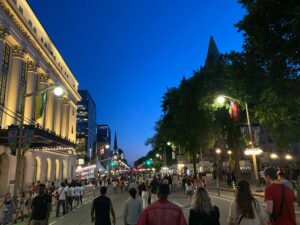
Canada plans to revive a post-World War Two strategy of using pre-approved designs so homes can be built quickly and economically, in an effort to tackle a housing affordability crisis that has dented Prime Minister Justin Trudeau’s popularity.
Housing Minister Sean Fraser said on Tuesday public consultations on the strategy – used in the 1950s to 1970s when housing demand surged after soldiers returned home – will begin in January.
“We intend to take these lessons from our history books and bring them into the 21st century,” Fraser, waving a catalogue of pre-approved blueprints from 1954, told reporters in Ottawa.
Housing supply has failed to keep up with Canada’s immigration-fueled population growth, and affordability worsened during the coronavirus pandemic when housing prices soared due to high demand amid low borrowing costs.
Opposition Conservative Party leader Pierre Poilievre has attacked Trudeau for the shortages, and has opened a commanding lead in opinion polls ahead of the 2025 elections.
In response, Trudeau’s Liberal government has made housing its top priority and has announced a series of measures, including a plan to convert federal properties into new homes by March and to identify more public buildings for home conversion.
Last month, Ottawa also introduced tax measures to ease a severe rental housing shortage by limiting income tax deductions on short-term rentals on services such as Airbnb (ABNB.O) and VRBO.
Canada’s housing agency projects that if current rates of new construction continue, the housing stock will increase to close to 19 million housing units by 2030 but the country needs to build extra 3.5 million units by that time to restore affordability.
“The goal of having a streamlined catalogue of pre-approved designs is to cut time and costs from the process of building,” Fraser said, adding that an estimate of how many units could be built under the proposal would be available after public consultations.
The ministry would look for designs for multiplexes, mid-rise buildings, student housing, seniors’ residences, and other small to medium-scale residential properties, he said.
The pre-approved construction would be tied to existing building codes and would aim to ensure that designs reduce power bills. Builders would still have the option to construct houses using their designs.







